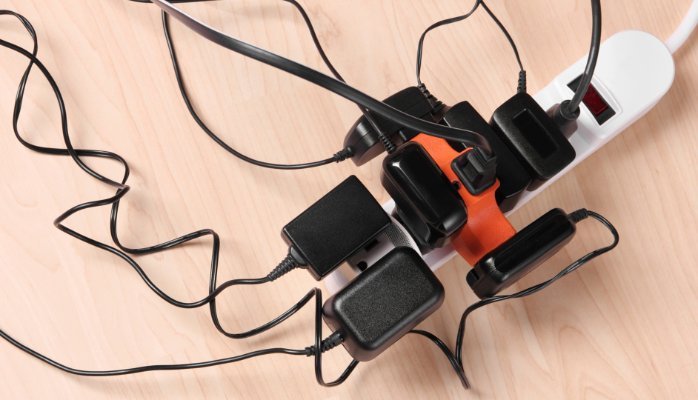
By John Reese
USAG Stuttgart Public Affairs
and Lisa Rivers
Directorate of Assessments and Prevention, Workplace Safety Division
U.S. Army Combat Readiness Center, Fort Rucker, Alabama
An electric shock occurs when a person comes in contact with a source of electrical energy. Electricity travels in closed circuits, normally through a conductor. Sometimes, however, a person’s body, an effective conductor of electricity, mistakenly becomes part of the electric circuit. Electrical energy flows through a portion of the body to the ground, resulting in a shock. The human body can feel a faint tingle at as little as 1 milliampere.
Electrical injuries represent a serious workplace health and safety issue. Data from the U.S. Bureau of Labor Statistics indicates that there were nearly 6,000 fatal electrical injuries to U.S. workers between 1992 and 2013, and 24,100 nonfatal electrical injuries from 2003 through 2012. In 2015, there were 2,480 nonfatal electrical exposures that resulted in injuries requiring time off from work.
“In the past in garrison offices, we’ve found a high use of ‘temporary wiring’ devices, power strips and extension cords,” said Assistant Chief Leonard J. Fagan, USAG Stuttgart Directorate of Emergency-Fire Department.
The National Fire Protection Agency defines temporary wiring as approved wiring for power and lighting during a period of construction, remodeling, maintenance, repair, or demolition, and decorative lighting, carnival power and lighting, and similar purposes. It may be used for 90 days, such as decorative lighting during the holiday season. The power strips are another issue, posing a threat of fire if the wrong rating of strip is used.
“It is important to ensure amperage or wattage rating is not exceeded and that the unit has a certification label, such as CE, TUV, etcetera,” Fagan said. “There are lots of euro shops (like dollar stores found in the U.S.) with cheap units from China that have not been tested for the European market.”
Power strips and extension cords should never be used on appliances that get hot; those need to be plugged directly into a power receptacle, Fagan warns.

“Many office buildings have central UPS (uninterrupted power supply) systems in the building. These are strictly used to ensure office equipment, such as computers, keep running during power failures,” Fagan explained, adding that German workplace safety regulations require office electrical equipment to be annually certified. “We’ve found toasters, refrigerators, coffee machines, etc, plugged into UPS receptacles.”
Running appliances also drains the UPS batteries a lot quicker. Toasters, refrigerators, coffee machines and similar appliances should only be located in common kitchens of office buildings, Fagan advised.
Exposure to electrical energy can result in no injury or devastating damage or death. The severity of injury from an electrical shock depends on the amount of current flowing through the body, how the current traveled through the body, length of time the body remains in the circuit and the current’s frequency.
An electrical shock may cause burns or leave no visible mark on the skin. Lower-voltage electrical shocks can result in superficial burns on the surface of the skin, while higher-voltage shocks can result in internal burns to organs and affect the heart. This makes burns caused from electrical shock different from chemical and fire burns. The burns from an electric shock can result in tissue damage and organ failure and can eventually lead to death.
Electrical shock may also cause ventricular fibrillation, a life-threatening condition where the heart’s electrical activity becomes disturbed, affecting its ability to pump blood. If this is not treated immediately by defibrillation, ventricular fibrillation can be lethal, as the heart muscle cells start moving independently. Under certain circumstances, even a small amount of electricity can be fatal. A person who experiences an electrical shock should be evaluated by a healthcare professional. If you or a co-worker receives a shock, seek emergency medical help immediately.
Most electrical accidents result from unsafe equipment or improper installation, unsafe environment or unsafe work practices. Some ways to prevent these accidents are through the use of insulation, guarding, grounding, electrical protective devices and safe work practices. By applying safe work practices such as de-energizing electric equipment before inspection or repair, keeping electric tools properly maintained, exercising caution when working near energized lines and using appropriate personal protective equipment, workers can protect themselves from electrical hazards.
“When a building is renovated, each planned workspace has a calculated wattage allotment. This is how the new electrical system for the building renovation is calculated,” Fagan explained. “When people bring personal equipment from home, it drives up the amount of electricity being used in the building, causing overloads and brown-outs.”
